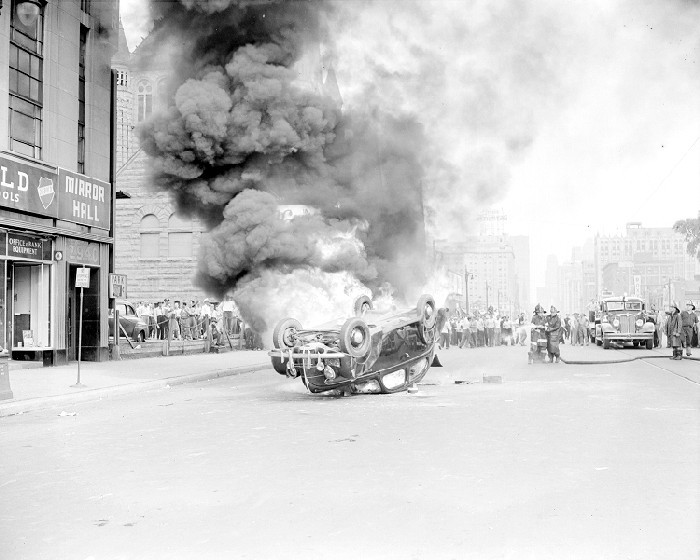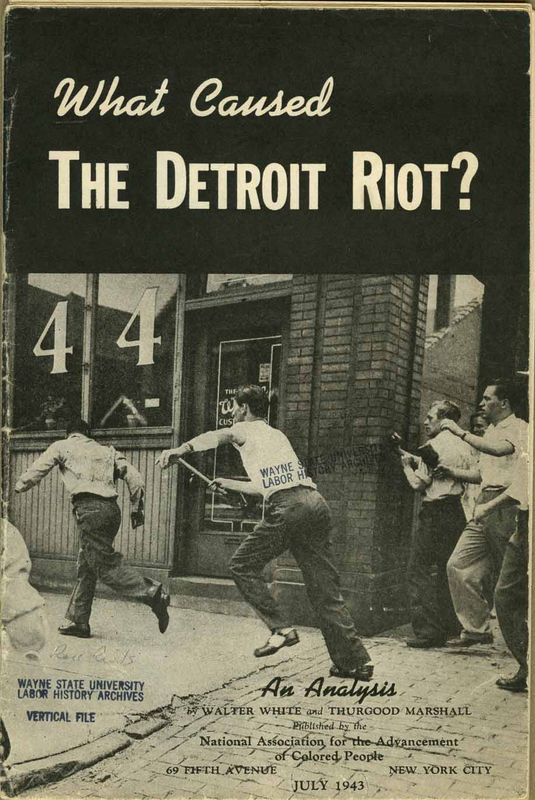1943 RACE RIOT
On June 20, 1943 fighting broke out between white and Black youth on Detroit’s Belle Isle, igniting three days of violence, looting, and arson. Mayor Edward Jeffries and Governor Harry Kelly requested federal intervention when the police could not quell the spreading riots. By the time President Franklin Roosevelt sent more than 6,000 U.S. Army troops to restore peace, nearly 700 people had been injured and 34 people were killed (25 Black and 9 white), and property damage totaled approximately $2 million. The brutal nature of the injuries and deaths in those three days revealed a well of hatred that went much deeper than city officials were prepared to publicly acknowledge. A lack of honest action, combined with questionable investigations that placed blame squarely at the feet of Black Detroiters, further incited their growing sense of injustice.

Street cars and automobiles barely escape damage as a fire ball erupts from a car tipped over by a mob during the 1943 Race Riot in Detroit, Michigan.

The NAACP published a pamphlet titled What Caused the Detroit Riot? An Analysis, written by Walter White and Thurgood Marshall. July 1943.

A Bureau of Labor Statistics chart details work stoppages in 1943 by white employees in Detroit factories over issues related to the job advancement of Black workers. July 1943.

